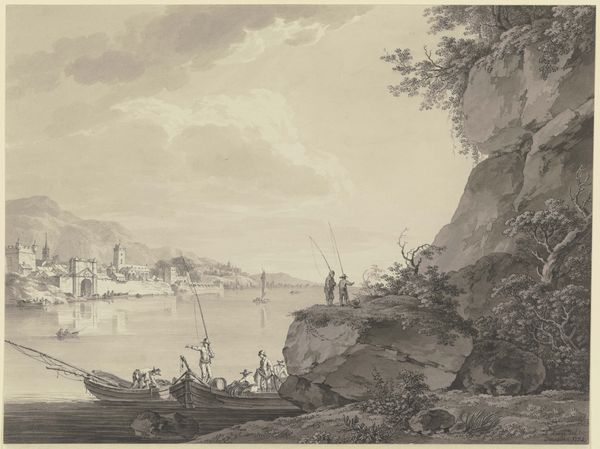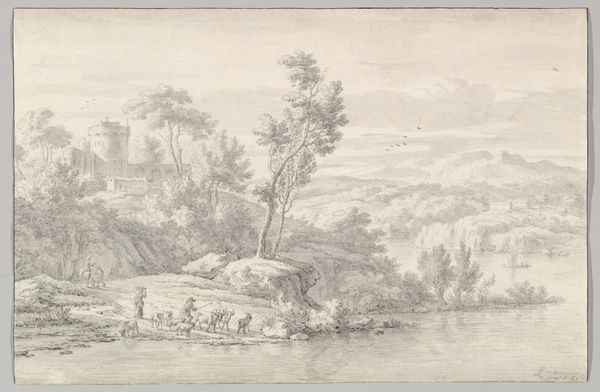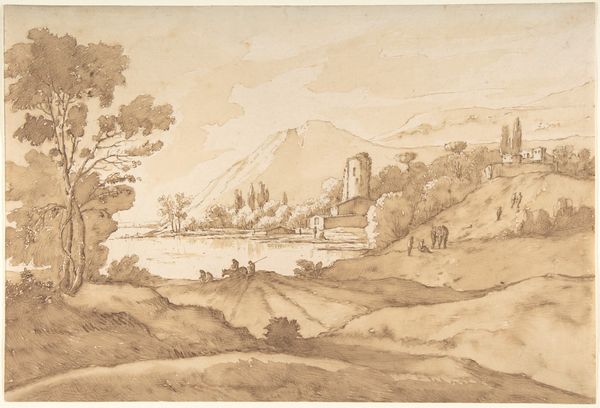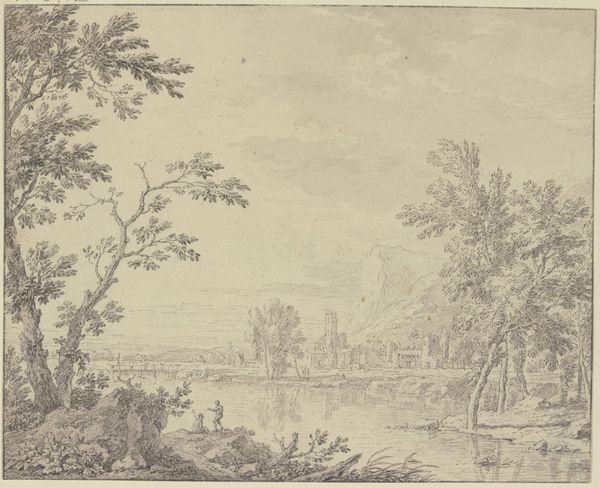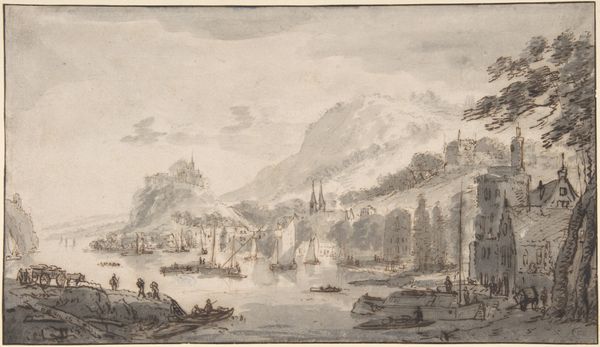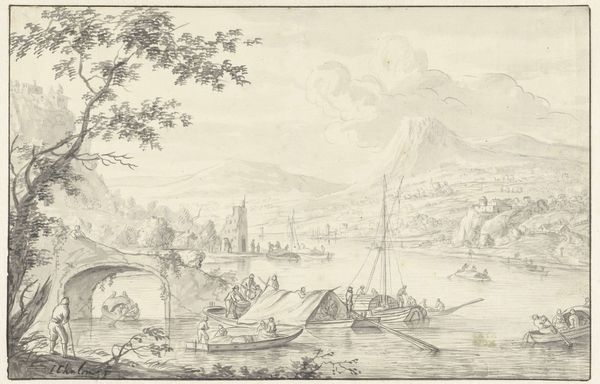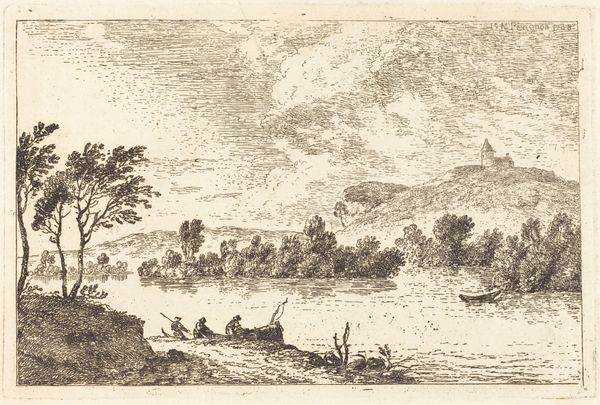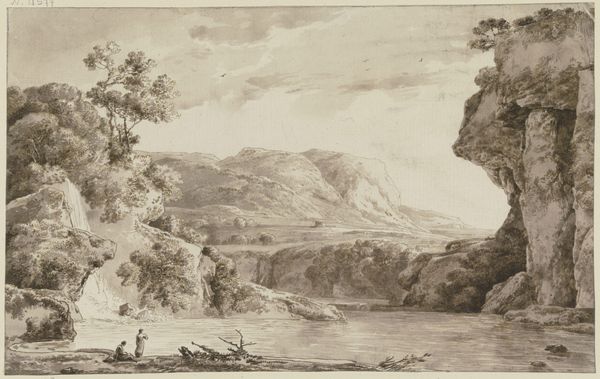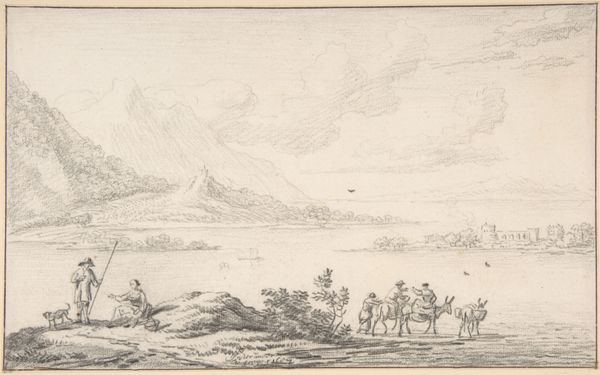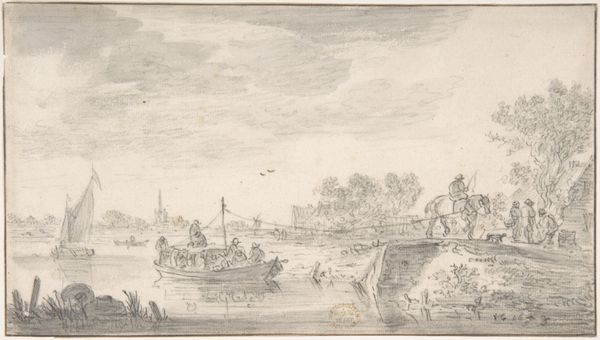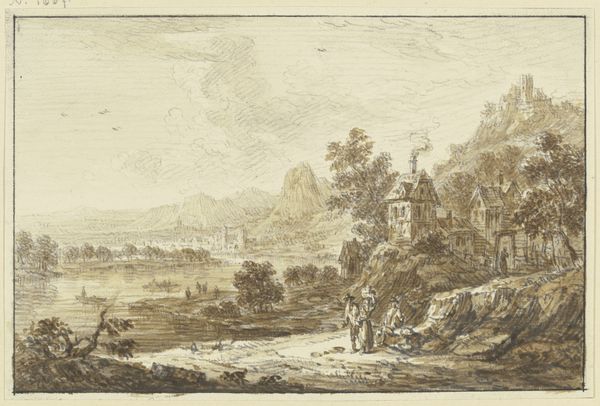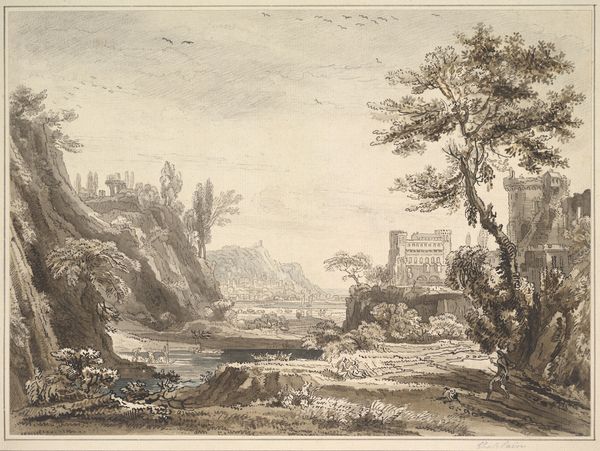
Flusslandschaft, rechts ansteigendes Gebirge, links ein Haus mit einer Brücke, bei der ein Boot landet
0:00
0:00
drawing, ink, pencil, chalk
#
drawing
#
landscape
#
etching
#
ink
#
romanticism
#
pencil
#
chalk
Copyright: Public Domain
Editor: Here we have "Flusslandschaft, rechts ansteigendes Gebirge, links ein Haus mit einer Brücke, bei der ein Boot landet", a landscape drawing by Franz Schütz made with pencil, chalk, ink, and etching. It has such a calm, idyllic feel. What do you see in this piece that goes beyond its visual appeal? Curator: This seemingly serene landscape speaks volumes about the societal structures embedded within our perception of nature. Think about the placement of the house, the path, and the boat landing; they are access points. This is about resources, trade, and who has the ability to engage with them. Who is allowed to occupy this space? Editor: That’s interesting. I hadn’t thought about it in terms of access. Are you suggesting the landscape isn't just about beauty, but also about power dynamics? Curator: Exactly. Landscape art often portrays an idealized version of the world, obscuring the realities of labor, ownership, and even ecological exploitation. Romanticism often cloaks social stratification and the uneven distribution of resources. Who profits from this beautiful landscape, and at whose expense? What labour is involved in moving goods from one location to the other via this river? Editor: So by looking at the composition – the way the artist directs our eye – we can start to uncover those hidden narratives? Curator: Precisely! The romanticism of this etching belies the social fabric it subtly displays, a reflection of 18th or 19th century dynamics and social strata. It’s also critical to understand who created this artwork. What do we know about the artist? From what position of power did he speak? These kinds of images contributed to constructing an ideology around land, ownership, and belonging. Editor: I see! This makes me look at landscapes in a completely new light, thinking about the socio-political dimensions and questioning the narrative of beauty. Curator: Absolutely! And that's the key. Art encourages us to challenge the narratives, not accept them passively. To constantly ask ourselves: who is included, who is excluded, and why.
Comments
No comments
Be the first to comment and join the conversation on the ultimate creative platform.
